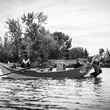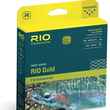I’m apparently the only person in America who hasn’t seen The Bear, the Hulu series about a talented but tormented chef, his restaurant, and the various people who cycle in and out of his orbit. But then, I was apparently the only person in America who didn’t see The White Lotus or Succession, either. It’s not that I’m reflexively skeptical about shows that critics gush over; it’s just that, my God, how many streaming services can a person subscribe to? And how much TV can a person watch?
Still, as someone who’s interested in food and cooking and fancies himself a fair hand in the kitchen, I couldn’t help but click on an article I noticed online: “How to Outfit Your Kitchen Like Carmy from The Bear.” My curiosity got the better of me; I had a sneaking suspicion that at least one of Carmy’s “go-tos” would be identical to one of mine—a suspicion that proved correct. Turns out that the fictional Carmy, like the non-fictional Tom Davis, is a devoted user of All-Clad stainless steel cookware.
Unlike Carmy, though, who has an entire battery of All-Clad products at his disposal, my arsenal is limited to a single indispensable workhorse: the All-Clad 12-inch Fry Pan. It’s the most versatile piece of cookware I own—and it consistently earns top ratings from test kitchens and product recommendation sites such as Wirecutter (the Gold Standard, in my opinion). There’s almost nothing you can’t do with this pan. It can go directly from the stovetop to the oven; you can use it to sear, sauté, simmer, smother, braise, brown—pretty much any application you can think of. A gooey patty melt? A stellar slab of oven-roasted salmon? A sizzling pheasant scallopine? All in a day’s work for this bad boy.
The All-Clad’s superpower is its unique triple-ply construction: an interior layer of aluminum sandwiched between two layers of stainless steel. This serves to transmit heat evenly and efficiently, while at the same time offering precise temperature control. It’s an uncommonly well-balanced pan, too, heavy enough to provide meaningful resistance but not so heavy as to feel like it’s fighting back. Plus, it cleans up beautifully and, last but by no means least, it’s damn near indestructible. I’ve had my All-Clad skillet for close to 40 years now, and while there are specks and daubs of baked-on goo here-and-there—the age spots of honest use—it’s as sound, solid, and supremely functional as it was the day it was given to me, semi-clandestinely (read: off the books), by Willy Karlheim, the hulking German-born chef at the Baileys Harbor Yacht Club on Wisconsin’s Door Peninsula.
I was the Maitre D’ at the BHYC for two seasons in the mid-1980s, and while I don’t recall Chef Willy saying much more than “I want you to have this” I’ve always understood it to be an expression of his gratitude for being the adult in the dining room (most of the waiters and waitresses, as they were called in those days, were college kids); for unreservedly embracing what he was trying to accomplish with his food; and for helping in some small way to make the Yacht Club the premier fine-dining establishment in Door County, a.k.a, “The Cape Cod of the Midwest.”
I think, too, that he appreciated the interest I took in food and cooking, both in the specific sense of what was coming out of his kitchen—it was Willy who turned me on to whitefish livers—and in the larger sense of what it meant to be a chef in the classic European tradition. Willy was rightfully proud of his status as a member of the Chaine des Rotisseurs, the oldest guild of professional chefs in the world (its roots stretch back to the 13th century) ... but his idea of decompressing after a long, hot night of Veal Piccatas, Chicken Marengos, and Coquilles St.-Jacques was to repair to a local tavern, order a Tombstone pizza, and wash it down with half-a-dozen CC-and-7s, all while burning through half-a-pack of Marlboros.
For my part, I came away from my tenure at the BHYC feeling that everyone should have the experience of working in a restaurant, not only to get a taste of the adrenaline-fueled esprit de corps it breeds but to develop an abiding tolerance for those times when you’re dining out and your food’s a little slow to arrive. Once you understand what’s involved in getting your order from the kitchen to the table, and how difficult and demanding the work is on both sides of the swinging doors, you’ll never look at a restaurant quite the same way again.
Oh, and if you’re thinking that, having been surrounded by hormone-addled college kids and parboiled tourists for two summers I must have at least a few mildly salacious stories to tell, you’re right: I do. But not here.
Truth to tell, in the years immediately following my departure from the Yacht Club my culinary ambitions lay dormant. There was just a lot going on in my life. My writing career was gaining traction, I was traveling for assignments and also to hunt and fish, I had three and sometimes four bird dogs to wrangle, and, on top of everything else, my marriage was falling apart. I used my pan all the time, but it was for mundane stuff: browning ground beef, simmering pasta sauce, frying bacon. Probably the most haute cooking I did with it was frying walleye fillets fresh-caught from the lake I lived on, although you have to be trying awfully hard to screw up fresh walleye no matter what kind of pan you’re using.
Then, in 1992, I started dating Joan—the woman I’d marry four years later. She’d started cooking seriously when she was in high school and began subscribing to Gourmet when she was in college; then, after moving back to Green Bay (her hometown) in her 20s to take a job at UW-Green Bay, she taught cooking classes, did some catering and recipe development, and generally became known as one of the best cooks in town. More than a few well-heeled gourmands offered to back her if she opened a restaurant, and while that never happened it tells you a lot about the kind of culinary cred she brought to the table.
Also, just FYI, she made our wedding cake. Three tiers. Separated by pillars.
Now, you have to understand that the cookware I was using in those days was, for the most part, crap. A motley assortment of abysmally cheap, mismatched, garage-sale junk that no self-respecting home chef would have in his or her kitchen. It was no surprise, then, that the first time Joan came to my place (we lived 70 miles apart) and started looking around in the kitchen, her facial expressions ranged from bemusement to disgust. Or at least they did until she discovered the All-Clad pan, at which point she registered a kind of wide-eyed wonderment. It was as if, after pawing through a closetful of Sears “Ted Williams” fly rods, she’d found a pristine Dickerson bamboo.
“This is a really good pan,” she said, hefting it and appraising its balance. “Professional chefs use this pan. I can’t believe you have this. Where did it come from?”
“Actually,” I said, “it was a gift from the chef at the Baileys Harbor Yacht Club. I worked there as the Maitre D’ for a couple of summers back in the mid-80s.”
“That was a hell of a nice gift,” she said, still admiring the pan. “These puppies aren’t cheap.”
“The chef liked me,” I shrugged. “And I’m pretty sure he didn’t pay for it out of his own pocket, if you catch my drift.”
“Ah,” she said, nodding. “I get it. Well, we’re going to put this pan to work.”
And so we did. I couldn’t begin to count the meals the All-Clad pan has made or played a part in over the years. Somewhere in the thousands, surely. Most have been of the “everyday” variety, obviously (although we like to think our culinary default level is a little above average), but every so often I’m inspired to roll up my sleeves, do the hard, repetitive, but necessary prep work that’s about 90% of the battle, and whip up something special—possibly even memorable.
This May, after stumbling into a trove of morels while hiking a trail with Rumor, my English cocker spaniel, I set out to re-create a mind-blowing dish that Chef Willy had made: Medallions of Veal in Morel Brandy Cream Sauce.
Yeah, roll that around on your mind’s tongue for a while.
The Cliff’s Notes version is that I dusted the medallions with flour, quickly sautéed them in butter, and put them in a low oven, covered, to stay warm. Then I added a handful of finely chopped shallots along with a little more butter to the pan and sautéed them until they’d just begun to soften. (“Sweating,” chefs call this step.) Next I added the coarsely chopped morels, cooked them down over medium heat, poured in about a third of a cup of brandy, and flamed it. Once the flames had died down I deglazed the pan with some chicken stock, poured in a cup of cream, lowered the heat, and simmered the sauce until it was thick but still pourable. I corrected the seasoning with salt and pepper, swirled a little more butter in just because it never hurts, and Voila!, a home-cooked meal to rival anything you could get in a white-linen restaurant.
And to think it all came together in a 40-year-old All Clad skillet. Thanks, Chef Willy.
And Carmy, eat your heart out.































Comments
Drew Irby replied on Permalink
Your veal dish sounds yummy. You can sear and cook salmon and pork tenderloin the same way, all in one skillet.
The only All Clad gear I have is a big roasting pan which is used a lot especially for chicken and turkey. Have made a lot of stock in that pan. God products.
Pages